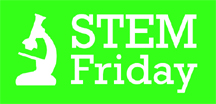I recently published my first edited book, Labor of Love: A Literary Mama Staff Anthology , with Small Harbor Publishing . It's an anthology of writing from Literary Mama staff over the past 20 years. It's a beautiful collection and I am proud of the writers and proud to share the book. It seems a fitting moment, as I pondered sharing about the book here on the blog, to reflect on my life as a blogger, and acknowledge that it is time to officially end this blog. I started blogging in about 2007, when my baby was learning to toddle, when I was learning how to be a mother and stepmother, when I was just starting to see my way as a writer. I needed it back then. I craved it. I had a variety of blog iterations--family, art, creativity, writing things I delved into. There's a freedom in blogging, a casualness, an easy familiarity that's lacking (for me anyway) in other kinds of writing. I loved blogging and the words came pouring out. Ove...
- Get link
- X
- Other Apps


Comments